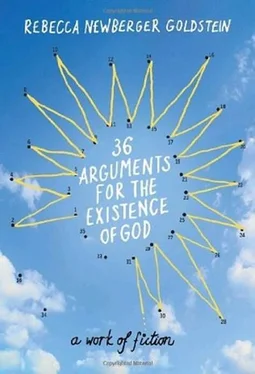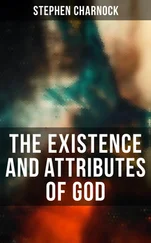5. The Argument from the Fine-Tuning of Physical Constants
There are a vast number of physically possible universes.
A universe that would be hospitable to the appearance of life must conform to some very strict conditions. Everything from the mass ratios of atomic particles and the number of dimensions of space to the cosmological parameters that rule the expansion of the universe must be just right for stable galaxies, solar systems, planets, and complex life to evolve.
The percentage of possible universes that would support life is infinitesimally small (from 2).
Our universe is one of those infinitesimally improbable universes.
Our universe has been fine-tuned to support life (from 3 and 4).
There is a Fine-Tuner (from 5).
Only God could have the power and the purpose to be the Fine-Tuner.
God exists.
Philosophers and physicists often speak of “the Anthropic Principle,” which comes in several versions, labeled “weak,” “strong,” and “very strong.” They all argue that any explanation of the universe must account for the fact that we humans (or any complex organism that could observe its condition) exist in it. The Argument from the Fine-Tuning of Physical Constants corresponds to the Very Strong Anthropic Principle. Its upshot is that the upshot of the universe is… us. The universe must have been designed with us in mind.
FLAW 1: The first premise may be false. Many physicists and cosmolo-gists, following Einstein, hope for a unified “theory of everything,” which would deduce from as-yet unknown physical laws that the physical constants of our universe had to be what they are. In that case, ours would be the only possible universe. (See also The Argument from the Intelligibility of the Universe, #35 below.)
FLAW 2: Even were we to accept the first premise, the transition from 4 to 5 is invalid. Perhaps we are living in a “multiverse” (a term coined by William James), a vast plurality (perhaps infinite) of parallel universes with different physical constants, all of them composing one reality. We find ourselves, unsurprisingly (since we are here doing the observing), in one of the rare universes that does support the appearance of stable matter and complex life, but nothing had to have been fine-tuned. Or perhaps we are living in an “oscillatory universe,” a succession of universes with differing physical constants, each one collapsing into a point and then exploding with a new big bang into a new universe with different physical constants, one succeeding another over an infinite time span. Again, we find ourselves, not surprisingly, in one of those time slices in which the universe does have physical constants that support stable matter and complex life. These hypotheses, which are receiving much attention from contemporary cosmologists, are sufficient to invalidate the leap from 4 to 5.
6. The Argument from the Beauty of Physical Laws
Scientists use aesthetic principles (simplicity, symmetry, elegance) to discover the laws of nature.
Scientists could only use aesthetic principles successfully if the laws of nature were intrinsically and objectively beautiful.
The laws of nature are intrinsically and objectively beautiful (from 1 and 2).
Only a mindful being with an appreciation of beauty could have designed the laws of nature.
God is the only being with the power and purpose to design beautiful laws of nature.
God exists.
FLAW 1: Do we decide an explanation is good because it’s beautiful, or do we find an explanation beautiful because it provides a good explanation? When we say that the laws of nature are beautiful, what we are really saying is that the laws of nature are the laws of nature, and thus unify into elegant explanation a vast host of seemingly unrelated and random phenomena. We would find the laws of nature of any lawful universe beautiful. So what this argument boils down to is the observation that we live in a lawful universe. And of course any universe that could support the likes of us would have to be lawful. So this argument is another version of the Anthropic Principle-we live in the kind of universe that is the only kind of universe in which observers like us could live-and thus is subject to the flaws of Argument #5.
FLAW 2: If the laws of the universe are intrinsically beautiful, then positing a God who loves beauty, and who is mysteriously capable of creating an elegant universe (and presumably a messy one as well, though his aesthetic tastes led him not to), makes the universe complex and incomprehensible all over again. This negates the intuition behind Premise 3, that the universe is intrinsically elegant and intelligible. (See The Argument from the Intelligibility of the Universe, #35 below.)
7. The Argument from Cosmic Coincidences
The universe contains many uncanny coincidences, such as that the diameter of the moon as seen from the earth is the same as the diameter of the sun as seen from the earth, which is why we can have spectacular eclipses when the corona of the sun is revealed.
Coincidences are, by definition, overwhelmingly improbable.
The overwhelmingly improbable defies all statistical explanation.
These coincidences are such as to enhance our awed appreciation for the beauty of the natural world.
These coincidences must have been designed in order to enhance our awed appreciation of the beauty of the natural world (from 3 and 4).
Only a being with the power to effect such uncanny coincidences and the purpose of enhancing our awed appreciation of the beauty of the natural world could have arranged these uncanny cosmic coincidences.
Only God could be the being with such power and such purpose.
God exists.
FLAW 1. Premise 3 does not follow from Premise 2. The occurrence of the highly improbable can be statistically explained in two ways. One is when we have a very large sample: a one-in-a-million event is not improbable at all if there are a million opportunities for it to occur. The other is that there are a huge number of occurrences that could be counted as coincidences, if we don’t specify them beforehand but just notice them after the fact. (There could have been a constellation that forms a square around the moon; there could have been a comet that appeared on January 1, 2000; there could have been a constellation in the shape of a Star of David, etc., etc., etc.) When you consider how many coincidences are possible, the fact that we observe any one coincidence (which we notice after the fact) is not improbable but likely. And let’s not forget the statistically improbable coincidences that cause havoc and suffering, rather than awe and wonder, in humans: the perfect storm, the perfect tsunami, the perfect plague, et cetera.
FLAW 2. The derivation of Premise 5 from 3 and 4 is invalid: an example of the Projection Fallacy, in which we project the workings of our mind onto the world, and assume that our own subjective reaction is the result of some cosmic plan to cause that reaction. The human brain sees patterns in all kinds of random configurations: cloud formations, constellations, tea leaves, inkblots. That is why we are so good at finding supposed coincidences. It is getting things backward to say that, in every case in which we see a pattern, someone deliberately put that pattern in the universe for us to see.
ASIDE: Prominent among the uncanny coincidences that figure into this argument are those having to do with numbers. Numbers are mysterious to us because they are not material objects like rocks and tables, but at the same time they seem to be real entities, ones that we can’t conjure up with any properties we fancy but that have their own necessary properties and relations, and hence must somehow exist outside us (see The Argument from Human Knowledge of Infinity, #29, and The Argument from Mathematical Reality, #30, below). We are therefore likely to attribute magical powers to them. And, given the infinity of numbers and the countless possible ways to apply them to the world, “uncanny coincidences” are bound to occur (see Flaw 1). In Hebrew, the letters are also numbers, which has given rise to the mystical art of gematria, often used to elucidate, speculate, and prophecy about the unknowable.
Читать дальше












